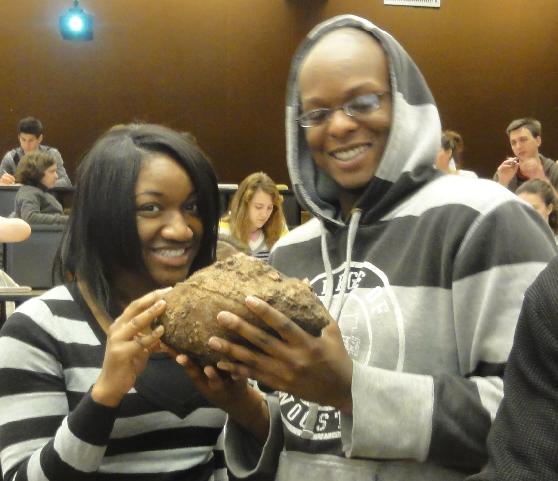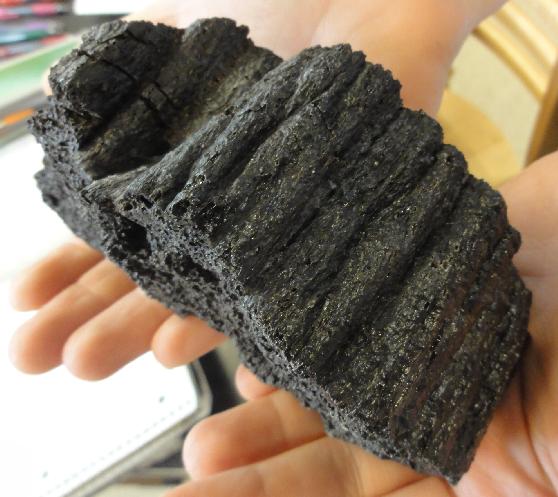WOOSTER, OH – Students in the Geology of Natural Hazards course spent a day studying the products of volcanic eruptions. Here are some of the outstanding samples in our volcanic collection:

Reticulite is a delicate network of basaltic glass that forms during Hawaiian fire fountaining. Volatiles expand easily in the low-viscosity magma, creating a dense network of interconnected vesicles separated by thin strands of quenched lava (sideromelane).

Accretionary lapilli are rounded pea-sized pieces of tephra that consist of volcanic ash. Ash aggregates into balls because of electrostatic forces in the eruption column.





I recognize that beautiful bomb!
I still have some olivine-cored bombs sitting in our garden at home; collected in SE Arizona while at field camp with Becky Mellinger (89) through U of A. My kids still don’t understand why daddy gets so excited about them.
Explaining bombs to the kiddos at Science Day last weekend was really fun–they (and their parents!) thought they were so cool 🙂